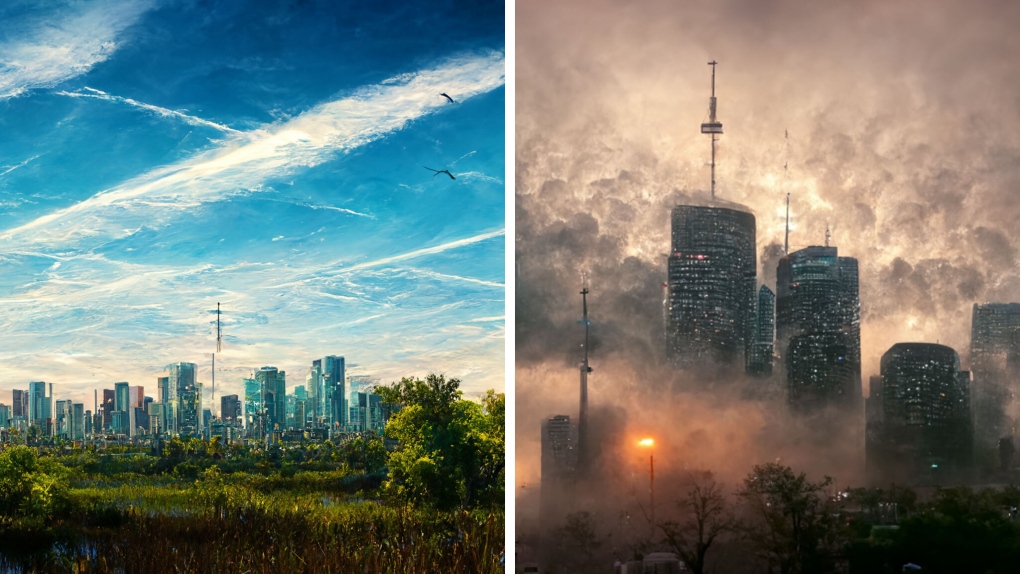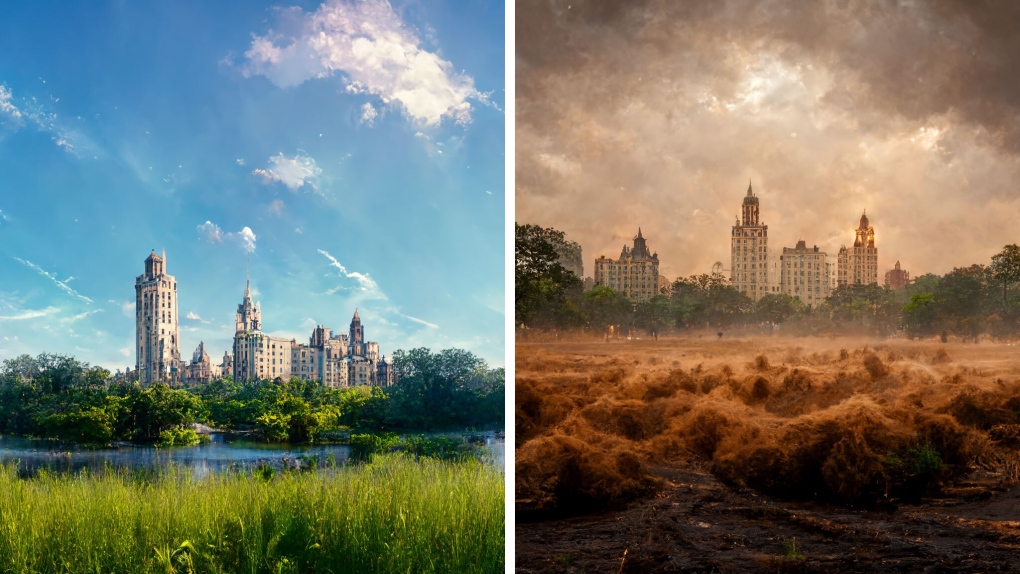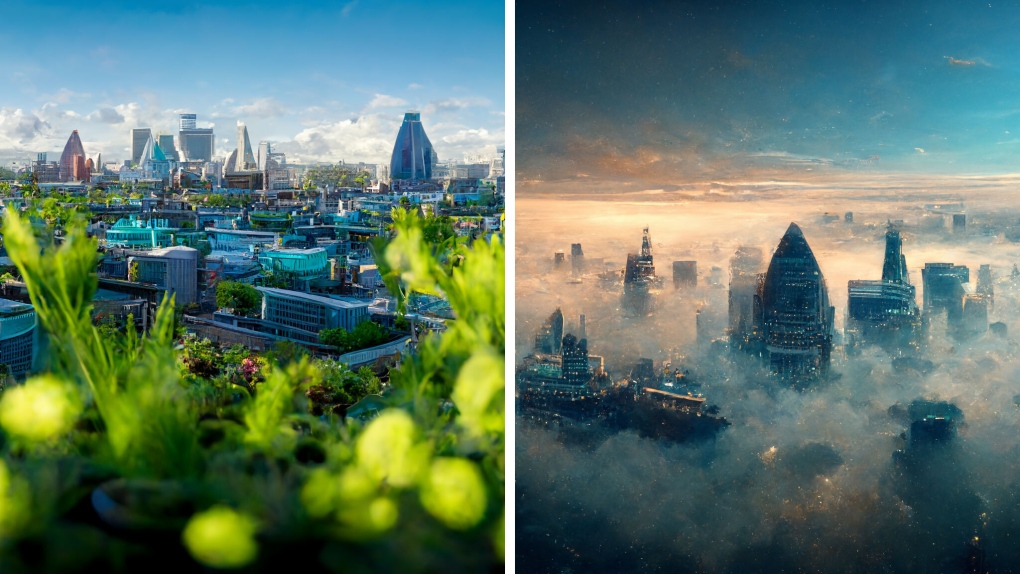Canada has developed a plan to achieve net-zero emissions by 2050, along with many other countries, meaning they won't produce more emissions than they can absorb from the atmosphere by that year. But what will happen if they don't meet this goal?
As world leaders descend on Egypt for the annual climate conference known this year as COP27, experts warn that the world is not on track with meeting previous emissions-cutting goals.
Most countries aren't even close to keeping their commitments made in the 2015 Paris Accords, which called for keeping global warming below 2 C or ideally 1.5 C, according to a report released in April by the United Nations Intergovernmental Panel on Climate Change (IPCC).
Net-zero climate experts at the U.K.-based price comparison company Uswitch used an artificial intelligence (AI) tool called Midjourney to find out what major cities in the world would look like 70 years from now in the worst- and best-case climate scenarios.
To uncover the potential consequences of not meeting climate goals, the green energy team collaborated with the research director of Oxford University's Net Zero initiative to analyze emission data and the latest IPPC report to "identify how each country will be most affected by climate change in 2100."
The researchers used Midjourney to predict the future of 20 well-known locations around the world. They include Toronto, New York, Paris, Rio de Janeiro, Sydney, Tokyo, Agra, Auckland, Barcelona, Beijing, Berlin, Dubai, Edinburgh, Giza, Kruger National Park (South Africa), London, Los Angeles, Mexico City and Moscow.
Here is what they predicted Toronto would look like in 2100:
 Toronto's best- and worst-case scenarios are seen in AI-created images from Ben Gallizzi and Professor Sam Fankhauser via Uswitch.com.
Toronto's best- and worst-case scenarios are seen in AI-created images from Ben Gallizzi and Professor Sam Fankhauser via Uswitch.com.
Aiming to achieve a net-zero status by 2040, Toronto has one of North America's most aggressive goals for tackling global emissions, established after a climate emergency was declared in the city in 2019.
Fossil fuel consumption in Toronto homes, businesses and automobiles would have to be entirely phased out over the next 20 years in order to achieve the net zero by 2040 objective, according to the municipal government. This is necessary since climate change is predicted to make Toronto's weather hotter, wetter and more intense in the coming years.
"AI anticipates a dark and gloomy Toronto that has extremely visible pollution affecting the city's skyline. However, if the city council and the people of Canada contribute to making these changes then the image on the right could resemble a more positive outlook," according to a Uswitch release.
New York in 2100
 New York's best- and worst-case scenarios are seen in AI-created images from Ben Gallizzi and Professor Sam Fankhauser via Uswitch.com.
New York's best- and worst-case scenarios are seen in AI-created images from Ben Gallizzi and Professor Sam Fankhauser via Uswitch.com.
New York has experienced severe pollution due to everyday commuter emissions, like most business hub cities. According to the AI visuals, New York City's lush Central Park would become permanently dry if current trends hold and they do not reach net zero by 2050.
London in 2100
 London's best- and worst-case scenarios are seen in AI-created images from Ben Gallizzi and Professor Sam Fankhauser via Uswitch.com.
London's best- and worst-case scenarios are seen in AI-created images from Ben Gallizzi and Professor Sam Fankhauser via Uswitch.com.
The capital of England has experienced notably hotter and drier summers in recent years. The average summer in London could be 5 per cent drier and the average summer day could be 3 C warmer by the middle of this century, researchers at Uswitch say. Heat waves are more likely to occur and were significantly hotter in the summer of 2022, when London's temperature hit 41 C.
Working toward the net-zero target will help London avoid appearing foggy and drab, as the AI images show, highlighting poor air quality and pollution.
“It is important to visualize how the world could look in the next few decades if we fail to start making changes now," Ben Gallizzi, energy expert at Uswitch said in a release.
“If countries around the world do not start to change their habits, then the repercussions could lead to many places looking unrecognizable.”












































